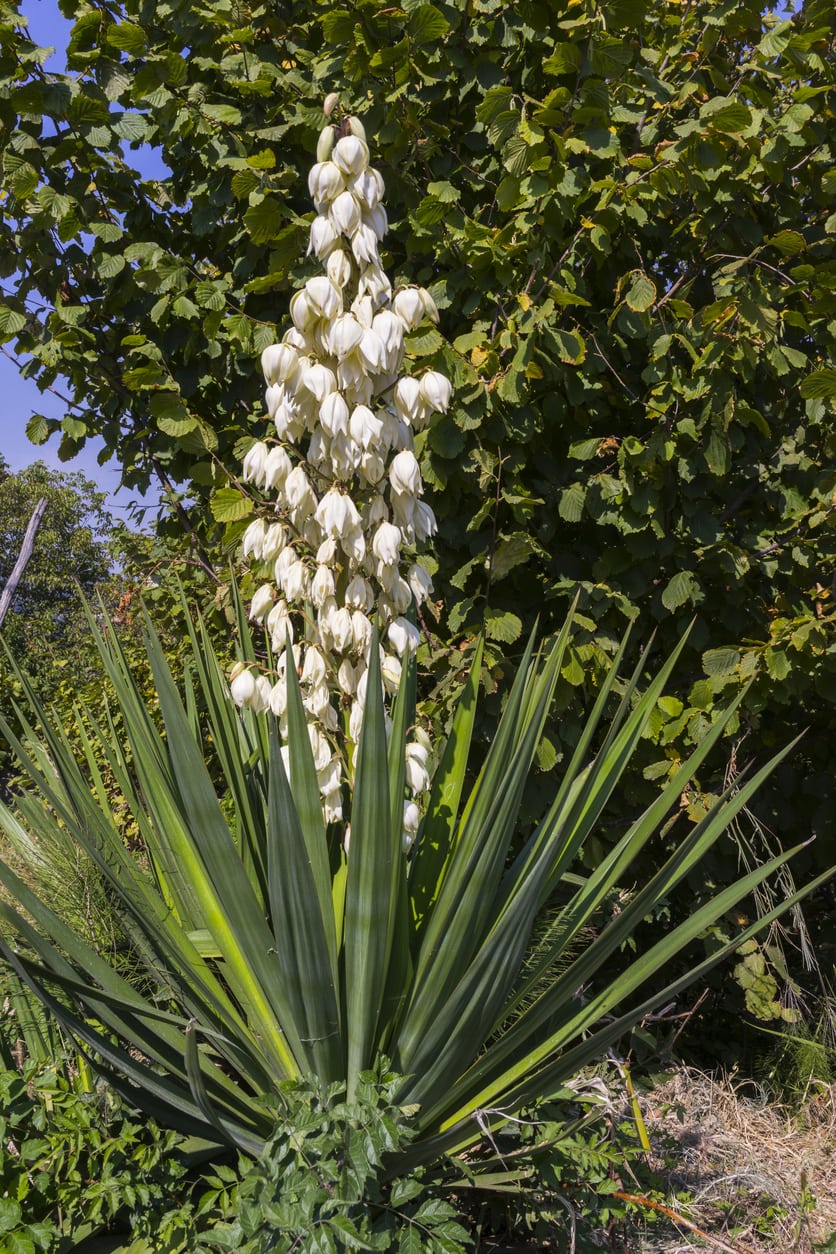What Is Soapweed Yucca – How To Grow A Soapweed Yucca Plant


What is soapweed yucca? This distinctive member of the agave family is an attractive clumping perennial with grayish green, dagger-like leaves that grow from a central rosette. During the summer, stout stalks lined with creamy, cup-shaped blooms rise 2 to 3 feet (61-91 cm.) above the plant. Growing soapweed yuccas isn’t difficult as long as you can provide the right growing conditions. Let’s learn how to grow a soapweed yucca.
Soapweed Yucca Information
The Native Americans of the Great Plains valued soapweed yucca (Yucca glauca), using it for aches and pains, sprains, inflammations, and also to staunch bleeding. The roots were used as a laxative and the soapy juice was an effective treatment for poison ivy and other minor skin irritations. The stout fibers were incorporated into sandals, baskets, brooms, and whips. Soapweed yucca, with a taproot of up to 20 feet (7 m.), is a hardy plant that stands up to drought, wildfires, and grazing. Although it is admired for its ornamental qualities, soapweed yucca can sometimes become a nuisance in pastures and rangeland.
Growing Soapweed Yuccas
Soapweed yucca requires well-drained soil and plenty of sunlight. Low light results in spindly growth and fewer blooms. Allow plenty of space for soapweed yucca. The leaves are sharp enough to cut skin, so be sure to plant soapweed yucca safely away from sidewalks, driveways, and play areas. With regards to soapweed yucca care, you’ll want to remove dead leaves in early spring. Pruning the yucca at this time will encourage new growth and tidier plants. Cut the stiff flower stalks when the blooms fade. Always wear long sleeves, long pants, and sturdy gloves when working with yucca plants. Soapweed yucca is drought tolerant but benefits from an inch (2.5 cm.) of water every week to ten days during hot, dry weather. However, if you forget to water, the plant will survive.
Gardening tips, videos, info and more delivered right to your inbox!
Sign up for the Gardening Know How newsletter today and receive a free copy of our e-book "How to Grow Delicious Tomatoes".

A Credentialed Garden Writer, Mary H. Dyer was with Gardening Know How in the very beginning, publishing articles as early as 2007.
-
 Looking For Plants To Give You The Soft And Fuzzies? Try These 5 Fuzzy Leaf Plant Options
Looking For Plants To Give You The Soft And Fuzzies? Try These 5 Fuzzy Leaf Plant OptionsLovers of texture, drama, silver foliage and tactile plants will adore these special sensory garden additions. These fuzzy leaf plant options will leave you all aglow
By Susan Albert
-
 Get Ready For A Summer Of Hummers! Grow These Full Sun Hummingbird Plants and Flowers
Get Ready For A Summer Of Hummers! Grow These Full Sun Hummingbird Plants and FlowersIf you’re lucky enough to enjoy a sunny backyard, make sure you are maxing out on your pollinator opportunities and grow these full sun hummingbird plants and flowers
By Tonya Barnett